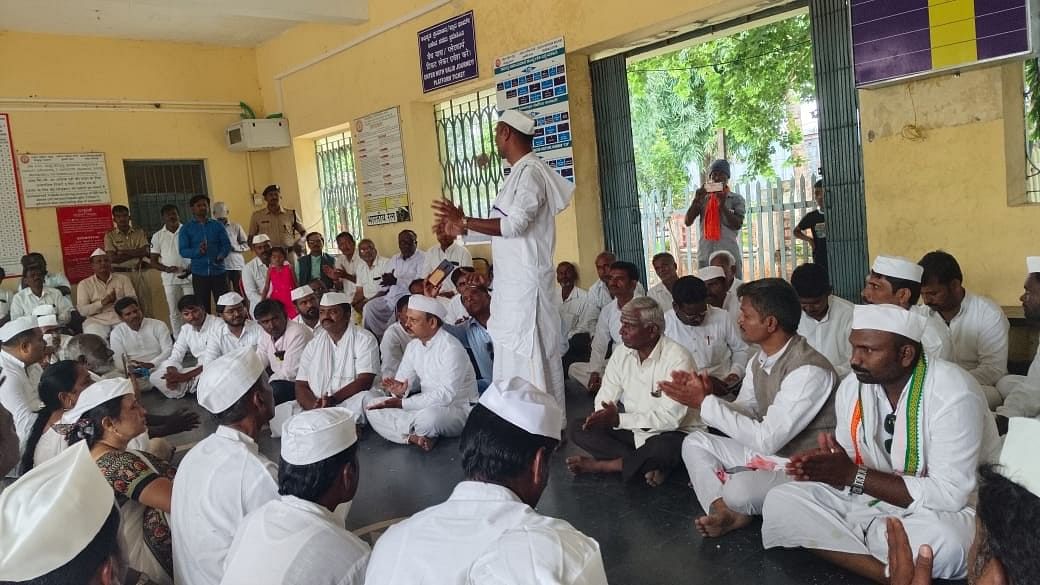
Credit: Special Arrangement.
It all began three years ago in Koppal, with a commitment to practice the Gandhian way of life.
‘Namma Nadige Gandhiyedege’ (Our Walk Towards Gandhism), a grassroots initiative, was launched to promote Mahatma Gandhi’s way of living. This collaborative effort by local organisations, teachers and cultural associations is a unique celebration of Gandhi Jayanti. Basavaraj Savadi, president of Koppal district’s Gandhi Vichara Vedike, sheds light on the factors that led to the efforts. “We recognised a growing need for social cohesion and harmony in our community. Inspired by Gandhi’s way of living, we sought to promote pluralism and diversity. We also wanted to move beyond mere speeches on Gandhi Jayanti. We thought our initiative would create a positive impact in the district and beyond,” he explains.
The initiative brought together various organisations, including Gandhi Balaga, Gandhi Vichara Vedike, Shikshakara Kala Sangha, Ashok Circle Nataka Tanda, and Kalarava Shikshakara Seva Balaga, to promote Gandhism.
“Members of these bodies belong to different religions, castes and communities. We promote inter-faith harmony, inclusivity, diverse cultures and beliefs. These are hallmarks of Gandhism. We want our society to follow this for peace and harmony,” Savadi says.
These bodies jointly held an event and felicitated achievers in various fields, and also hosted cultural events as part of the first edition of Namma Nadige Gandhiyedege.
Following the inaugural event, informal discussions among members brought newfound clarity to the initiative. Energised by their initial success, they decided to plan something even more impactful for the next year. The group planned a brainstorming session, along with speeches and music concerts. The organisers were not confident about a big turnout. However, a large number of people attended and appreciated their efforts.
This was an indication that people still believed that the Gandhian philosophy could heal the wounds of contemporary society, which is plagued by divisive politics, hatred and violence.
Bhanapur, a village in Koppal district, holds a special place in the Kalyana Karnataka region. It is where Mahatma Gandhi arrived on March 3, 1934, to raise funds for the welfare of Harijans. During his visit, Gandhi made a powerful statement against untouchability by drawing water from a well owned by a dominant-caste family and offering it to two Harijan girls.
Kalappa Pattar, a young enthusiast, spontaneously prepared Gandhi’s illustration and gifted it to him. Years later, in 1998, Kalappa’s son Shankar Pattar created a poignant illustration of Gandhi’s 1934 visit to Bhanapur. This artwork has become a permanent fixture at the railway station, serving as a visual reminder of Gandhi’s historic stop.
“Considering Bhanapur’s historical significance, these bodies decided to hold a padayatra from Koppal to Bhanapur railway station for the second edition of Namma Nadige Gandhiyedege last year,” says Ramanna Shyavi, a member of the Kala Sangha.
“The padayatra evoked an overwhelming response, with 125 participants, far exceeding the expected 15-20. This diverse group included advocates, government staffers, teachers, merchants, writers and youths all united by their enthusiasm for Gandhi’s philosophy,” Shyavi adds.
Kamanur’s tale
This year, the heads of these outfits decided to organise a padayatra from Ashok Circle to Kamanur, a village about 12 km away from Koppal town. There is a compelling reason for choosing Kamanur as the culmination point for the padayatra this year. Today, Kamanur does not have any outlets selling harmful substances. Villagers are engaged in natural and organic farming. They follow traditional methods for sustainable development. The village is also the leading producer of millets in the region.
“Kamanur indeed has embraced the Gandhian way of life. It is an exemplary model of sustainable living, showcasing the power of community-driven initiatives and traditional practices,” says Anandteertha Pyati, a progressive farmer and writer from the village.
The padayatra, as part of the third edition began at 5.30 am and reached Kamanur at 8.30 am on October 2. Several farmers were honoured for adopting traditional practices for livelihood. There was also a brainstorming session on ‘Gandhi and Sustainable Development’.